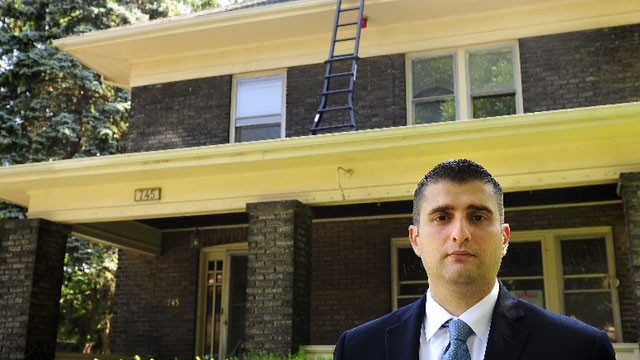In Niagara Falls, N.Y., a man shortly will attempt a daring feat—and he isn't Nik Wallenda: Seth Piccirillo, Niagara Falls' new director of community development, will attempt to lure young professionals to live in his city's beleaguered downtown, which for decades has been hemorrhaging residents--young ones especially.

Niagara Falls' population 50 years ago teetered at 100,000. Then it began to fall and today it's half of what it was. If by the time of the next census it's under 50,000, leaders fear the city will risk the loss of some forms of federal assistance.
"We've lost a lot of talent, a lot of brain power," admits Piccirillo. "For 50 years we've been asking ourselves: how do we keep our young people?" The city, he says, never really had a plan. Now it does: It will attract them from elsewhere by offering to pay their student loans.
The city is putting an initial $200,000 behind the idea. The first applications should arrive in the next couple of months, says Piccirillo, but "The graduating class of 2013 will be our first real swing at it."
He says he got the idea by reading news headlines. "College debt is at the forefront of so many stories you see now," he says. "The New York Times just reported that student debt has topped $1 trillion; 94 percent of students now have some amount of debt." At the same time, he says, Niagara needs those very same graduates. "We need to grow our population base. Having young professionals is the key to a modern economy." The solution seemed obvious: Offer debt relief to attract graduates.
Under Niagara Falls' plan, graduates who have earned a 2- or 4-year degree in the past two years can apply for up to $3,500 a year (for two years) towards repayment of their student loans. The same deal would be offered to graduate students. Graduates of Niagara University and Niagara County Community College will be targeted at first, though the city hopes eventually to recruit graduates from other parts of the country.
To qualify, applicants will have to rent an apartment or buy a home within a designated downtown area. "We're not talking city-wide. We're taking acres," explains Piccirillo. "There's no doubt in my mind that getting even 100 to 150 people could revitalize the neighborhood."
In rural Kansas, a similar experiment is underway.
Fifty counties in the state have established Rural Opportunity Zones (ROZs) authorized to offer one or both of the following financial incentives to new full-time residents: Kansas income tax waivers for up to five years and/or student loan repayments up to $15,000.
To be eligible for loan repayments, applicants must hold an associate's, bachelor's or post-graduate degree; must have an outstanding student loan balance; and must establish residency in a ROZ county.
Chris Harris, manager of the Kansas program, says the idea is "to provide incentives for rural counties that have lost population over past decades." Applicants can come from any state. To date, he's received 338 applications, of which 111 have been from people out of state. About 75 percent qualify for one or both of the incentives. Applications now are being received at the rate of one a day.
"Our hope was that we'd get young professionals to move," he says. "Physicians, nurses, lawyers, accountants. And that's what we have seen--health professionals, teachers, veterinarians, accountants and a surprising number of lawyers. Our hope in the beginning was to attract individuals who would have a disproportionate economic impact on a region."
By way of example, he points to Dr. Aaron Zook, who, after doing his medical residency in Denver, relocated to rural Pratt, Kan., in part because of Kansas' debt-reduction offer. Zook told KSN TV in an interview that he had student loans totaling about $200,000. "Any help I can get is going to be real nice," he said.
So well is the Kansas program working that Harris' office has received expressions of interest from Nebraska, which, he says, is interested in establishing a similar relocation incentive.
Piccirillo in Niagara Falls says he's under no illusions that his debt repayment plan will fix his city's population problem. "Some have said that this, in and of itself, won't fix the city. And that's accurate."
Houses need to be spruced up. Old buildings need to be demolished. Concerns about crime and public safety will have to be addressed. But he points to other cities that have earned a new lease on life by reviving just a few square blocks.
One in particular inspires him: the Columbia City neighborhood of southeast Seattle, which, he says, was depressed, crime-ridden and post-industrial before renovation. "They set up a young and artistic neighborhood in a small area that included yoga studios, music venues, coffee houses. If you do a search online for Seattle, you'll see you'd want to spend time in Columbia City. That's the model in our minds."
He looks forward to the day when downtown Niagara Falls would be ranked with Columbia City among the top 10 neighborhoods in the U.S.
No comments:
Post a Comment